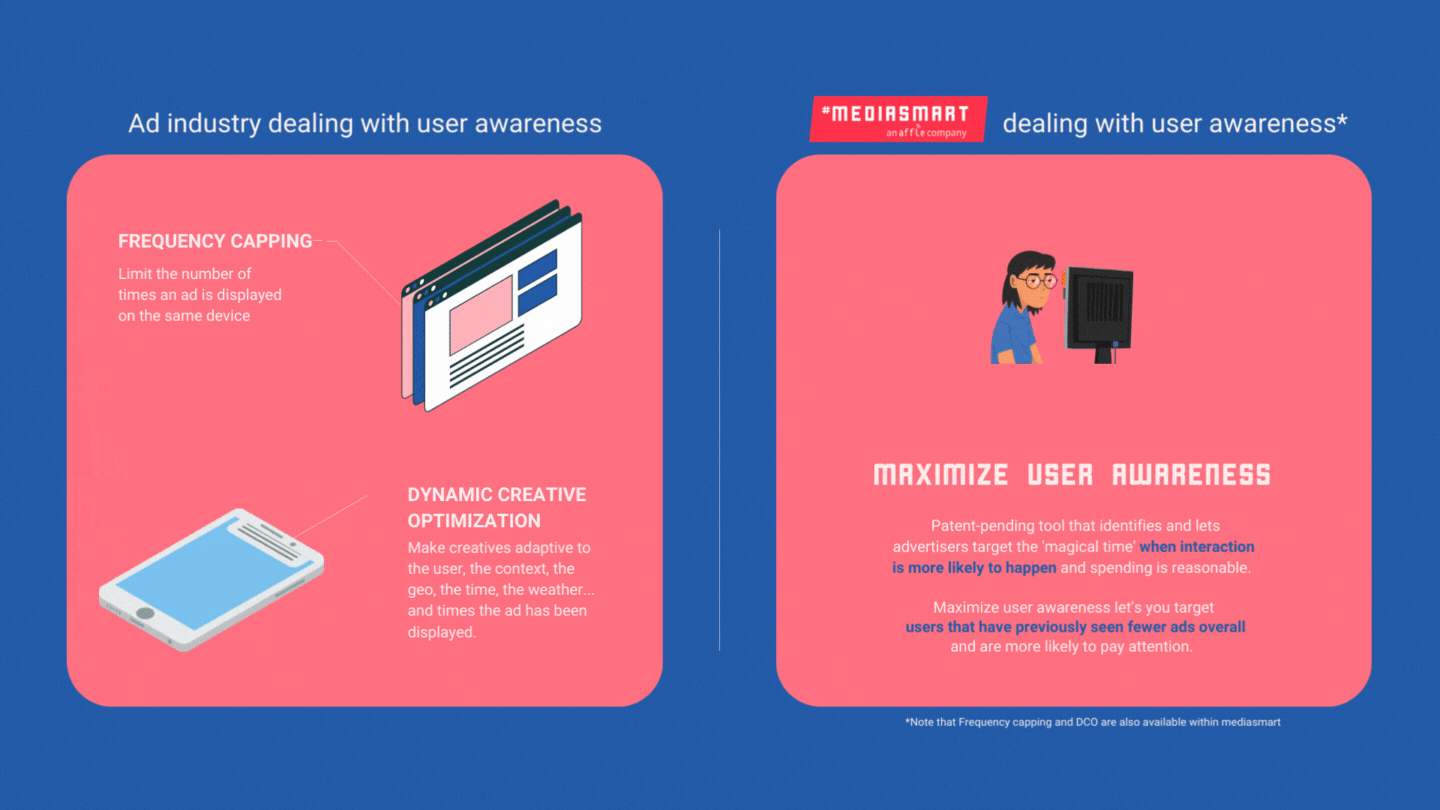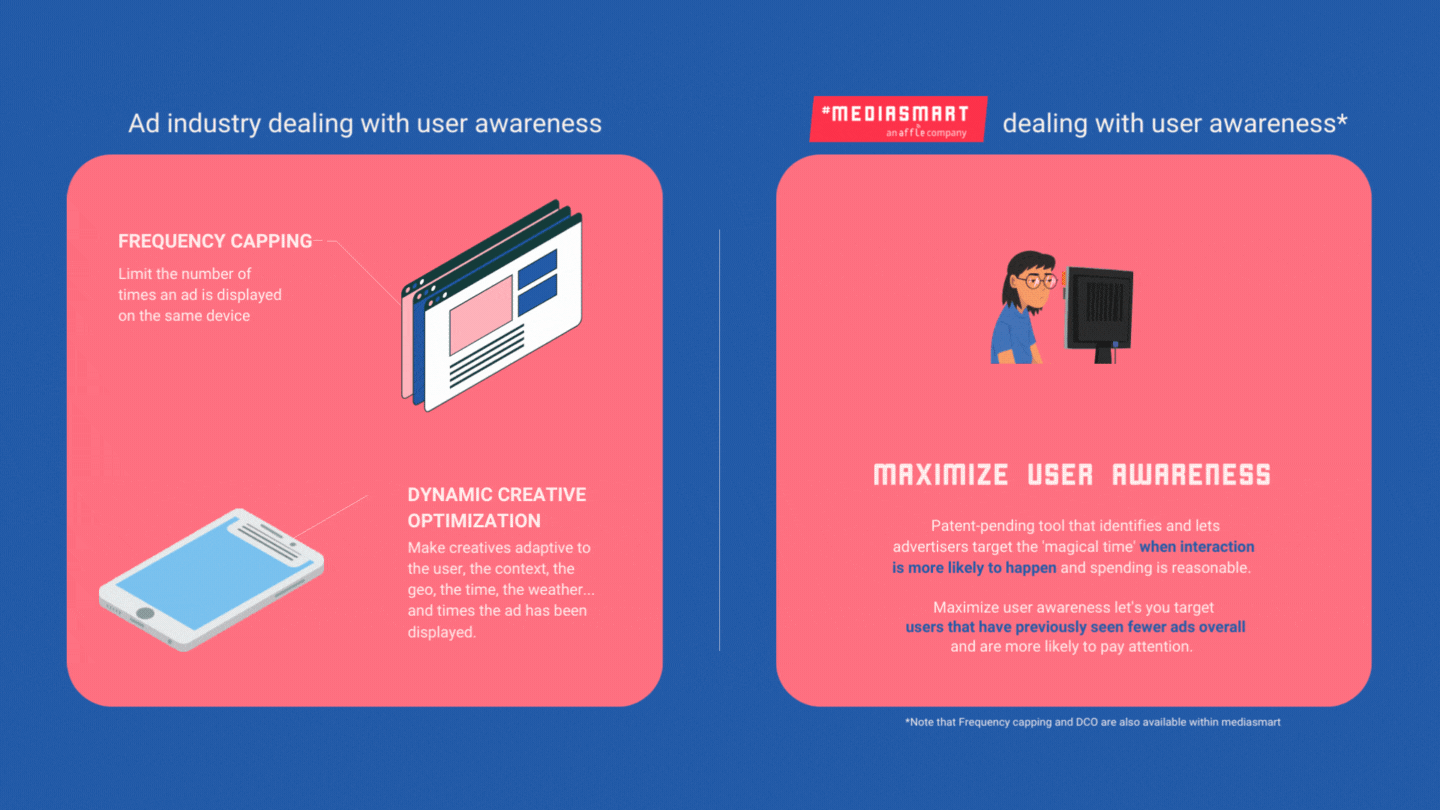Blog
Announcements, analysis and opinions on industry trends around the mobile programmatic world.

Subscribe now, and receive the latest programmatic content directly on your inbox!
Thank you for subscribing to our newsletter
If we were to ask you how many ads you have seen today while on your mobile or your Connected TV, would you be able to tell us a definite number? Perhaps, yes.
But if we were to ask how many of those ads you actually viewed and can recall, would you have the same response? Probably not.
Right from the time you wake up to the end of the day when you wind down, you are exposed to hundreds - maybe thousands - of ads, whether on your mobile phone or your Connected TV. There is not a definite number, of course, but some research in the U.S. puts this between 4,000 to 10,000 ads in a day! No wonder your attention is diverted, and there is less likely a chance of engagement with any ad that you’ve seen before. On the contrary, when you’re exposed to an ad not seen before (or seen fewer times), there’s a greater probability that it will catch your attention, leading you to engage or take action eventually.
No matter how interesting your ads are or how exciting the medium where they are served is, when a user sees the same ads too often, the ad experience eventually gets boring. And instead of associating with the ad or the brand, they tend to ignore it. When an ad is served to a user who has seen it before, advertisers often struggle with poor engagement. Often ads are served to an empty room on Connected TVs or distracted viewers on mobile devices, which can drastically impact the Click Through Rates (CTRs). Getting eyes-on-screen ad viewing is a challenge in the case of repetitive ads, leading to ad wastage.
How is the ad industry currently dealing with repetitive ads?
A common answer that emerged in the advertising industry to get around the problem of repetitive ads is Frequency capping. By limiting how often a user sees a particular ad, advertisers aim to fix the problem of getting viewers’ attention back to the screens. Frequency capping is a good tool to mitigate the problem of ad fatigue – a term used to describe how the audience stops noticing the ad as they become bored with repetitiveness. It also helps advertisers to distribute their budgets more effectively and get better performance from a bigger audience pool.
Another helpful tool is to do Dynamic Creative Optimization (DCO). This helps to keep your creatives fresh and can improve the chances of your audience taking notice of the ad again with new and personalized messaging. DCO is often used for retargeting campaigns to keep the user engaged when they have initially expressed interest in a particular product or service. Creative or messaging dynamism can help boost engagement by giving a personalized experience.
These strategies are effective once the user has already been exposed to the ad and you want to boost engagement.
But, how do you effectively reach the users in the first place who will offer high awareness?
Enter, Maximize User Awareness

At mediasmart, we studied how ad awareness can be improved. Our Analytics team studied the correlation between the number of ads served and the engagement and how ads are often displayed to saturated users or empty rooms.
Our study revealed that user clicks decreased significantly after a certain number of ads were served. This finding served as a starting point for building our new feature. The maximize user awareness feature allows our clients to target only the users that are more likely to interact with their ads.
This patent-pending feature helps to boost user engagement, strengthen customer experience, and improves the ad viewing experience. By improving ad engagement and CTRs, the feature helps advertisers to target inventory with a higher chance of interaction and increase reach. By detecting the number of times a device requests an ad, the tool determines if there is a high awareness user and, therefore, focuses on showing the ad to those users who have seen fewer ads and, hence, are more likely to interact with it, improving click-through-rates (CTR) and maximizing the ROI. In a nutshell, optimizing budgets by reducing wasted ad impressions.
Excited to try this feature on your campaigns?
Topics: Maximize User Awarness, patent, User awareness
%20(1).jpg)


